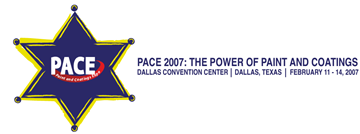Search
Conference Papers
View as
Sort by
Display
per page
Threshold Sand Rates Detected by Acoustic Sand Monitors in Multiphase Flow Production
Product Number:
51323-19100-SG
Publication Date:
2023
$20.00
Throughput Optimization for Tank Fabricators
Product Number:
51220-299-SG
Publication Date:
2020
$20.00
Time is Money: Improving Shop & Field Painting Throughput by Reducing Finish Coat Handling Time
Product Number:
41211-595-SG
Publication Date:
2011
$20.00
Time Management – Taking Back Control of your Life
Product Number:
41207-327-SG
Publication Date:
2007
$20.00
Time of Flight Diffraction and Modal Analysis of a Butt-welded Pipe
Product Number:
MPWT19-14295
Publication Date:
2019
$0.00
Time of Wetness in Marine Atmospheres: What Are We Measuring?
Product Number:
51315-5987-SG
ISBN:
5987 2015 CP
Publication Date:
2015
$20.00
Time Tested Performance of Bridge Coatings
Product Number:
41206-260-SG
Publication Date:
2006
$20.00
Time-to-Corrosion Initiation for Chloride Exposed Reinforced Concrete with an Admixed Corrosion Inhibitor: Part II – Consideration of Diffusional Inhibitor Egress
Product Number:
51314-3636-SG
ISBN:
3636 2014 CP
Publication Date:
2014
$0.00
Time-To-Corrosion Initiation of Chloride Exposed Reinforced Concrete Considering Time Dependence of the Diffusion Coefficient
Product Number:
51314-3637-SG
ISBN:
3637 2014 CP
Publication Date:
2014
$0.00
Titanium Duty Cycle Plasma Electrolytic Oxidation Influence on Film Porosity and Corrosion Resistance
Product Number:
51319-13135-SG
Publication Date:
2019
$20.00
Titans of the Abyss: Polyurethane, Polyurea and Hybrid Lining Technology
Product Number:
41213-773-SG
Publication Date:
2013
$20.00














